Your personal music search space.
Augment your understanding of music.
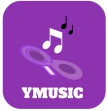
______________________________________________________________________________

YMUSIC SEARCH ENGINE

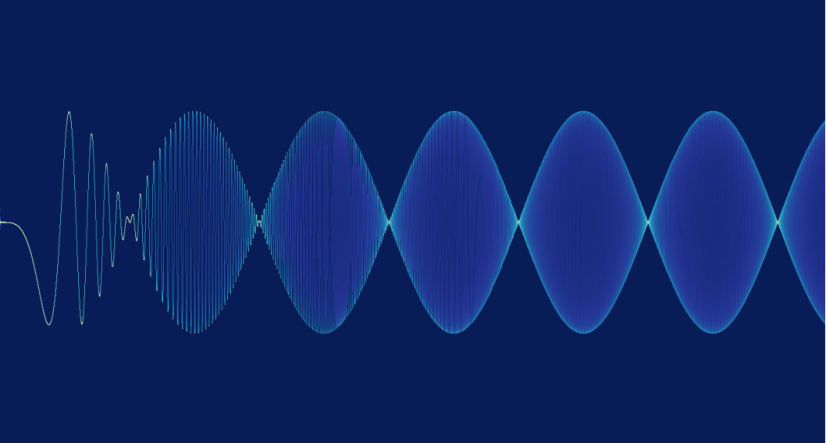
Music as a technology of the self and a resource for the individual
Mundane music consumption
Most of the time, the music listener who does not work in the field of music is consuming pieces of music in a mundane way: music is a medium used as a resource to shape emotions and thoughts, to grant access to self-remembrance or to change energy levels. Thus they use music as a technology of the self, the self being defined as an autonomous individual exercising subjective judgments. We may notice that the concept of self was born during the Renaissance.
On a daily basis, validating self-identity, music listeners may also develop views about others while listening to music, bringing understanding, alleviating stress, etc. Music helps to check and enhance regular routines in order to be able to achieve the usual tasks required by professional and family life. It is about reaching a state of mental concentration and feeling good.
Habits of music listeners may change over time, notably at life’s turning-points, those that are constitutive of the identity. Let us notice that, when discussing identity, the notion of reflection is essential: music listeners may construct their identity through narratives about themselves. Also, the notion of identity is not only related to what individuals actually experience but also to what individuals identify themselves with. Music listening is thus part of a musical identity that is shaped by the way listeners perceive themselves in specific contexts.
Music as an intrapsychic resource
Whatever the life they live, music listeners deal with demands related to intrinsic and extrinsic exchanges: the world is interfering with the personal universe of the listener, for better or for worse, either way it has consequences. Knowledge and attitudes are reorganized, sometimes during moments of a lack of control. The music listening experience is not automatically similar to a yoga session. The most common target of music composers is to affect the feelings of listeners. And most of the time, listeners use music to release their emotions. First of all because they are required to manage their emotions themselves. It is an imperative for social-coexistence, particularly in the multicultural environments that everyone may have experienced for some decades. Having wasted time in a traffic jam, nobody is allowed, returning home, to vent their anger on their neighbour’s dog .
When listeners are affected by anxiety and depression, feeling so bad that sometimes they cannot get out of bed and start the day, they want to listen to music that reinforce their bad feelings to lift their mood. Or the contrary. Anyhow, everyone regulates their emotions, emotion regulation being the process in which individuals select, expression and manifest these emotions.
Do you usually use music as a resource for the self or do you want to begin? Try YMusic, your free personal assistant (it includes musical criteria to select music), and enhance your daily life!
Do you want to be more intimate with sound and music? Try YMusic, your free personal assistant (it includes musical criteria to select music), and begin to envision it!
Graphical work to see the detail of the sound
Representing the fullness of sound via a graphic approach is a way for some music composers to put an original twist on their work. Sometimes it may help them to develop clear and strong forms that have dynamic inner structures. It may liberate their imagination at some critical point of the composition process, whatever it is for them. Also it may be an attempt to get to grips with the intimacy of the sound, being able to concentrate on the detail of sound in its horizontal and vertical dimensions.
Composers who want to predict as effectively as possible the physical rendering of their work generally learn acoustical phenomena and principles and how they are related to the human hearing system, the ears and their basilar membranes. When these composers represent the sonic aspects of a musical piece, they may bring out elements like temporal density, creating first an original tape that they extend or shrink in space.
Sound vision
Music listeners who want to give their full attention to the music without being distracted by their environment (whether it is a performer during a live setting or the decoration of their interior when they are at home) may close their eyes to focus their attention on the sounds they are hearing, envisioning images in their mind. That form of listening may increase the understanding of the musical phenomenon when it is applied to the structure of music itself, leading to another form of inspiration.
Questions, then, may emerge: how does a piece of music affect imagination? What does a specific part of the musical piece symbolise? The listener may move over the surface of the sound or, on the other hand, deeply enter into it. The ears may capture harmonic nodes, relating chords, navigating through the melodies, etc.
And music listeners may literally depict a piece of music that inspires them. That visual work requires full concentration but, at the same time, requires an openness to what happens in the instant, musically speaking. It is about letting the music happen as well as examining expectations. Musical structures may be slow or not, so, to distinguish the contours of a musical work, changes in orchestration or the detail of an instrument’s sound, the listener must be there, it is as simple as that. It is in that situation that intimacy with music is real. Generally, intimacy is linked to union: creating a musical visualization, the music listener is holding it more forcefully and music may manifest itself more clearly. The place where music is played and the number of people who are present at the performance is not so important: it is about being there. In a public space as well as in a private room, music listeners may sit inside and disappear in the music if they really want to.
Music and the intimacy of the sound
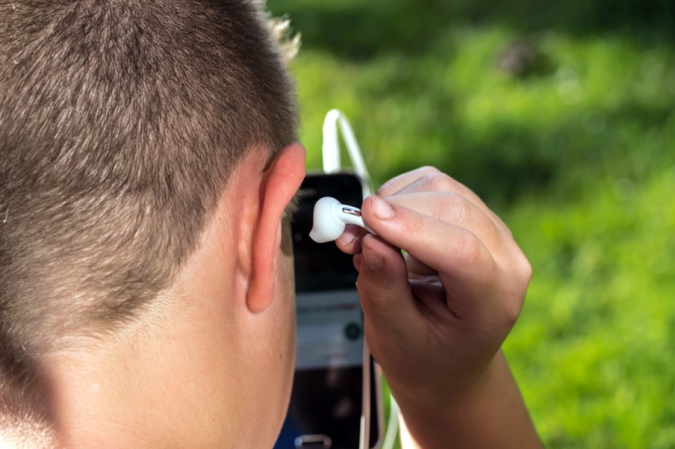
Do you want to define what you really appreciate in a piece of music, musically speaking? Try YMusic, your free personal assistant (it includes musical criteria to select music), and discover its features which include musical visualization!
In search of music in lakes of metadata
Today, browsing extensive musical catalogues has become common: drummer and psychologist Daniel Levitin noticed that nowadays, the average teenager is listening to more music in one month than someone living during the 1700s in their entire existence. However, online music services require their users to have a precise target in mind when they are beginning a new search, mainly a title or the name of an artist. Once a name or a title is introduced, listeners may select athe same title on various digital albums or listen to different titles created for the same performer. And it happens that listeners find the experience a little disappointing, a piece of music written by the same composer being, most of the time, different from the preceding one at the musical level.
Building a singular musical library requires a lot of time from individual listeners, even with the help of playlists made by curators. Apart from the fact that such a library may be difficult to organize, listeners may also feel that there is a gap, between their expectations and what they get, at the level of the sound. Also, there is always a new piece of music to discover or a mood to feel, so, does this process has an end? As most music browsers primarily rely on textual metadata which of course do not contain any musical information, do you know which ones are the most suitable? It is not necessarily those recommended by friends or music labels, and thousands of artists may be reached with only the click of a button.
How to overcome approximate musical classifications
Online music services currently do not provide ways to search the audio content of the music itself, and when they have an elementary ‘genre’ classifier, it is approximate, because each genre includes a massive range of musical forms, whether it is classical music or electronic music. Often, music listeners are searching for the unutterable, drawing in their heart their emotions and thoughts, not always having words to describe either their feelings or the music they are searching for. On the contrary, they are overwhelmed with titles, artists names, musical critics and other opinions.
If a music listener is doing a search like ‘What are similar pieces of music to Rhapsody in Blue by George Gershwin?’, in any search engine, the obtained results include, amongst others, links to numerous versions of Rhapsody in Blue, to the life and the work of George Gershwin and to websites dedicated to American music composers. However, no piece similar to Rhapsody in Blue is mentioned. So, finally, the listener does not get an answer to the question. Of course, general search engines do not let users surf in that way. And online music services are not conceived to analyze questions or to establish musical relationships between different pieces of music. Now, one musical application is offering specific criteria to select music based on music itself rather than metadata. It is the YMusic search engine. YMusic is a prototype of a music search engine which relies on a new music theory; it is designed for all music listeners who are searching for music that is new for them and who are trying to develop their knowledge, be they casual listeners or not.
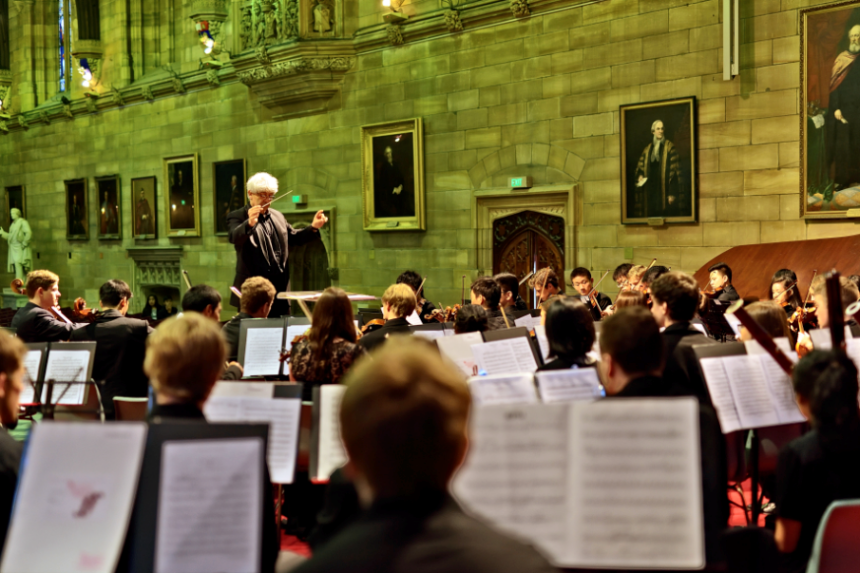
The construction of a singular music library
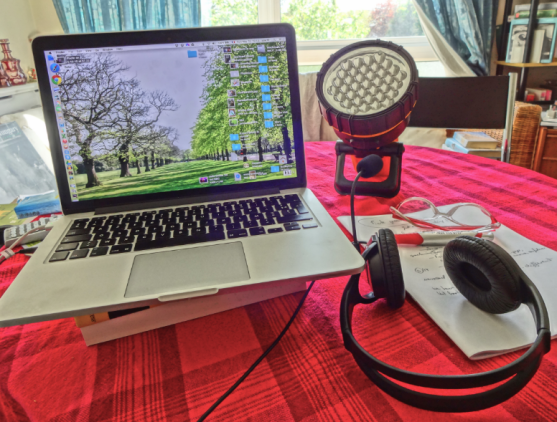
Do you want to define what is the musical sublime for yourself? Try YMusic, your free personal assistant (it includes musical criteria to select music), and find higher peaks!
Music and the construction of singularity
Transformative knowledge and bildung
Knowledge may be transformational. In fact, its acquisition may change an individual in three dimensions: psychological (it helps to increase the understanding of the self), behavioural (it modifies elements of lifestyle) and convictional (it may lead an individual to redirect their belief structure). It may be acquired during a major life transition, leading to a higher level of consciousness.
It is the case in the field of music as in any other field: transformational knowledge is relevant and important for the musically educated person. Also that specific type of knowledge is linked to the notion of musical ‘bildung’ (which means ‘education’ in German) without being interchangeable with it. In fact, transformational knowledge is linked to ‘musicing’ (including a ‘what’, a ‘how’ and a ‘when’). The notion of ‘bildung’, even if it implies self-cultivation, is more linked to the formation of the inner self, in relationship with the aesthetics of emotions.
Musical bildung is thus a constitution of the self through and by music. It is a sort of aesthetic transformation within the specific medium of music, a qualitative approach. Music listeners who see music as ideal for personal development want first to become someone else through music. It is not about quantity, as they learn only what is useful for their singular progression: a pure accumulation of musical information does not lead to musical bildung.
Musical bildung, ethics and the sublime
Going beyond technical considerations, the notion of musical bildung gives an ethical dimension to musical knowledge. However it is difficult to know how it works, because musical bildung is more a passive than an active process. Music listeners themselves do not always know when the transformation actually happens. Carefully, we may say that life events directly affecting the life of listeners have a greater impact than others. In that sense, music and life are linked.
All aspects of music listening that lead to a better reflective knowledge of the self may be seen as part of the musical bildung. It is an implicit knowledge, in connection with the aesthetic paradigms of emotion and listening. Plus the idea of bildung may be related to the quest for the sublime, even if there is generally no guarantee that music listening will lead to change in a singular life through the sublime.
In that branch of philosophy named ‘aesthethics’, which tries to define what beauty, taste and art are, the sublime is the quality of greatness, whatever it is ethical, intellectual, physical, etc. Not wanting to describe the ordinary aspects of human life, the sublime tends, on the contrary, to talk about realities that are exceptional: a stunning mountain, a distinguished spirit or a rare gem.
The sublime may be everywhere in music: in a musical structure itself (for example the Ninth Symphony of Beethoven) as well as in an unknown pop song whose lyrics encourage a higher love. The musical sublime is defined as the highest peak to which music can ascend. It must say that it is a very relative notion, that is discussed amongst classical music specialists as well as between fans of popular music.
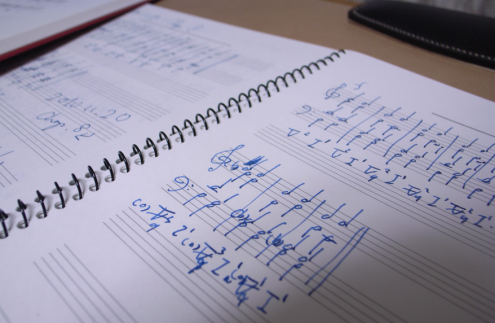
Now it is not necessary to get a turntable to enjoy music and music is lovable at any age. Do you want to take a break and listen to music? Try YMusic, your free personal assistant (it includes musical criteria to select music), and seize the day!
Music as landmarks
Without directly involving the notions of well being and health, music listeners generally like to talk about music in terms of emotions: they talk about the soundtrack of their life or their song, appropriating their musical experience. They mix musical activities, preferences, and habits in a singular way: specific pieces of music are associated by listeners to episodes or events in their life, these pieces being seen as milestones, evoking relationships, places or times.
When listeners link their musical tastes to their health, music really becomes a part of their singularity. Music becomes their music, whether it is shared by some hundreds or millions of people. Memories of music become part of life’s and, at the same time, occupy a place in daily life.
Music and decisive turning points
In life, some events are more important than others: a birth, a trip, a professional achievement. They may go together with changes in the environment, new experiences, or new people. In some cases, these changes may affect music listening habits, for instance when people start to share their existence. Arriving in a new high school, a student will tend to follow the musical tastes of a new classmate.
Concerning music itself, the ‘first record’ may be an event in a life. It is not valid only for the preceding generations. In fact, videos available on the internet show high school students presenting their new record player. In their context, listening to their first vinyl disc sounds like an extraordinary adventure which takes the form of a moment stolen from eternity. And putting on the records and taking them off still has a meaning, besides the universe of online music.
Music and daily life
Videos show that, listened to in a familiar room, the first record may be seen as the sweetest escape from school, family, and all social groups that may be linked to pressure, since domestic animals, pets and potato chips are admitted during listening. For instance, a student explains in a video why she stopped working out. She links that voluntary disclosure to the records she is presenting. Music listening here may be seen as a reassurance in a life already full of constraints.
That style of confidence may explain why, in a digital world where music is free most of the time, students want to buy it. Do they buy peace? The right to be alone? A student mentions how listening to vinyl discs is much more fun than publishing on social media. Without drawing a hasty conclusion, we may suggest the idea that record players may in some cases help young people to maintain a personal life outside of the field of social media, and a personal life outside of social social media is perhaps an inner life.
Music in a singular life trajectory
Do you want to be an active music listener? Try YMusic, your free personal assistant (it includes musical criteria to select music), and enrich your singular experience.
A stream of consciousness uniting composers, performers and listeners
To create music, the composer is combining knowledge and technical ability in order to move the mind and the heart of the listener. Understanding and skills acquisition being individual, the result is a singular piece of music. Such a distinctive outpouring may emanate from several individuals; however, it is still unique as long as it does not simply reproduce a musical work that already exists, and even in that case, it may be original (in the case of a cover for example).
Performers generally reproduce the musical content of existing sheet music; however, they are willing to make their own contribution to each work they play. To achieve that target, they are in touch with audiences, musical critics, and, when it is possible, composers. Also, a lot of performers are more and more inclined to analyze their relationship to music, reading researchers in the field of psychology, consulting musicologists or music industry agents.
As for music listeners, it appears that they are less and less passive auditors applauding at the end of a musical performance. They listen to music in a singular way, in conjunction with their life stories, have opinions on music and share them. Also they may browse new styles of music and artists more easily than in the past, due to the development of the internet.
Because all individuals involved in music are putting intentions in their acts, whether it is composing, performing, or listening, music is that singular cluster of awareness which makes it so pleasant.
Do renowned pieces of music stay unique when they are performed?
The same piece of music may be played hundreds of times, sometimes by the same performers for the same audiences; the uniqueness of each of these performances is real when everybody pays special attention to the music. Even when it is recorded, no track is unique like the Mona Lisa (even if that painting has an earlier version) because the format is duplicated and a lot of songs have covers, but the emotions and thoughts felt by the listeners remain unique each time. Because of the person, the place and the moment.
When various interpretations of the same piece of music are made, they are not substitutes, they are unique tokens of the same type. Music executives notice that sometimes it may create some disappointment amongst music listeners, especially when performers are pop stars. In fact, when a hit recorded by a pop star is played during a concert, a part of the fandom is waiting for an interpretation of the song that is totally identical to the one they first discovered on a music streaming service. That kind of expectation may lead to situations where artists are forced to give up their creativity. On the other hand, other fans will say that when a performance it is too similar to the one they heard in a recording, it is not authentic enough for them. In any case, in the field of popular music, no one is left indifferent to that question.
Music listening as a way to enrich singular individuals
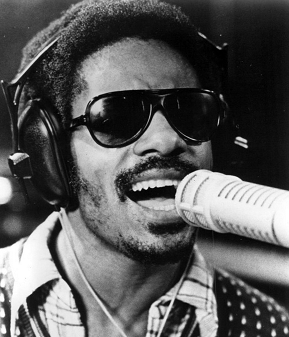
Do you want to test a new musical platform created in order to help music listeners to understand music? Try the YMusic search engine, your free personal assistant (it includes musical criteria to select music), and enhance your musical experience.
Artificial intelligence and singularity in the field of music
Introduction to the concept of singularity
The capacities of computers double every two years, Moore’s law says. What does it imply? Nice realities like the fact that the size of computers and mobile phones has reduced over time. Information technology is growing exponentially which in particular facilitates the exploration of the human brain. This growth seems so normal now that computer scientists hope for more, like the creation of nanomachines which could defeat all disease in the human body and help people to live longer. That hope has a name: ‘singularity’, a name used by music computer scientist, inventor and futurist Ray Kurzweil. More precisely, Kurzweil said that singularity is still to come, it is an era during which technological change will be so quick and its impact so deep that it will modify all aspects of human life.
Outside the scope of science, do ideas related to singularity create expectations amongst the general public? Certainly: people expect software engineers to resolve all sort of situations, whether it is about finding movies, doing paperwork, or buying food. And their virtual life, whether it is purely individual or social, is generally more important today than it was 10 years ago, enhanced by hardware as well as software. With today’s hardware, users may extend their reach mentally, for example when they take a mobile phone out of their pocket.
Artificial intelligence to enhance music creation
Artifical intelligence systems attempt to replicate human abilities (the process, applied to the brain, being named ‘reverse-engineering’). Is it threatening for composers, performers, and even listeners, in the context of music communication? Let us leave aside worst case scenarios, where composers and performers would disappear in favour of computer programmers: as Ray Kurzweil himself said, in computer science, there is and will always be a human factor. So, in the field of music creation, whatever the place artificial intelligence may take in the future, software applications that create music are and will ultimately be conceived by humans, even if computers may learn from computers.
Who, amongst computer scientists, has already done impressive work to enhance music creation through hardware and software? Ray Kurzweil, who is thus a pioneer in the field of artificial intelligence, created a keyboard synthesizer. In doing so, he became one of the first scientists to help musicians so that they may use technology to create the sounds of the future. Kurzweil also developed a technology helping blind people to read. That is why he attracted the attention of Stevie Wonder, a musician afflicted by blindness. They worked together for a few years on Kurzweil synthesizers, Stevie Wonder being the musical adviser, testing prototypes, giving feedback. Kurzweil’s devices are now considered as the first electronic musical instruments that could capture the sounds of the grand piano in a realistic way.
Artificial intelligence and singularity in the field of music
MUSIC AND SINGULARITY, FROM PHILOSOPHY TO COMPUTER SCIENCE
Music is more than a casual leisure, an art or the new way to increase the benefits of a company. It is all of that and even more. The music industry is a rich ecosystem in which everyone and everything has a specific place. From the composer to the listener, from psychology to spirituality, from art to science, get insights on each field of music, learning about craft or history, about human behavior or consciousness. A place is also given to ethical questions.
MUSICAL CULTURE IN ITS VARIOUS ASPECTS